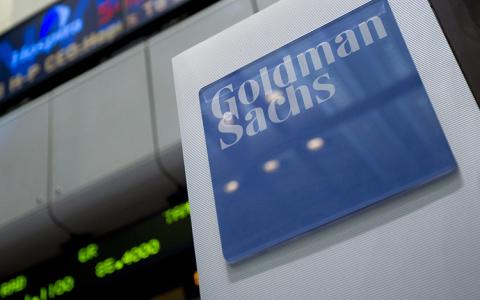
Although the coronavirus pandemic continues to take a toll on markets and business activity, Goldman Sachs revised up its forecasts for GDP and unemployment in 2020, but says failure to pass a new fiscal stimulus package would hurt growth.
KEY FACTS
Goldman now sees a slightly smaller hit to the economy during the current second-quarter, adjusting its GDP forecast to -33% from -36%.
But the Wall Street firm expects a strong rebound in the third-quarter, predicting GDP growth of 33%, and raised its outlook for full-year GDP to -4.2%, up from 5.2% previously.
“Recent economic indicators—including the May retail sales report—suggest that the coronavirus hit is abating more quickly than expected,” Goldman said in its recent note, explaining their upgrade to second- and third-quarter GDP.
“Reflecting this more rapid recovery,” the firm also lowered its projections for the national unemployment rate, which it now thinks will hover at 9.5% by the end of 2020, down from a previous forecast of 10%.
Goldman does warn of significant risks to the economic recovery however, with real GDP not expected to return to pre-coronavirus levels until mid-2021.
It now expects the economy to grow 5.8% on an annual average basis in 2021, down from 6.4% in the last forecast, which implies “somewhat slower sequential growth” in the fourth-quarter of this year.
CRUCIAL QUOTE
“While the U.S. economy continues to show clear signs of recovery, the growth outlook remains very uncertain,” the firm said in its note.
WHAT TO WATCH FOR
Goldman says fiscal policy is likely the most “imminent risk,” since extra federal jobless benefits of $600 per week will expire at the end of July. If Congress fails to agree on a Phase 4 coronavirus relief bill, “disposable income would fall sharply” and third-quarter GDP growth would be much slower, albeit still positive. The coronavirus outlook, on the other hand, is “perhaps the single most important factor” over a longer-term horizon, Goldman says. If new cases accelerate sharply, the U.S. economy’s entire reopening process could be disrupted; third-quarter GDP would be significantly lower and fourth-quarter GDP could turn negative. That said, if a coronavirus vaccine does become widely available by early 2021, economic growth will pick up sharply with “significant upside,” the bank notes.
This article originally appeared on Forbes.



